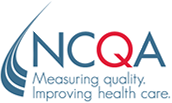
NCQA’s Patient-Centered Medical Home (PCMH) Recognition program is a powerful tool for transforming primary care into what patients want it to be. That means:
NCQA PCMH Recognition standards provide a roadmap for making this powerful change in how clinicians provide care. Clear, specific criteria show clinicians how to organize care around patients and work in teams to coordinate, track and improve care. We updated our PCMH standards in 2011 to be clearer, more specific and more challenging than our 2008 criteria. The new standards “raise the bar” in several important respects:
Different kinds of primary care practices can meet the standards, regardless of their size, configuration, electronic capabilities, populations served or location. NCQA’s three levels of PCMH recognition reflect how extensively practices meet our criteria. The different levels allow diverse practices to meet requirements and become what their patients want them to be.
| Attachment | Size |
|---|---|
| 338.69 KB |

